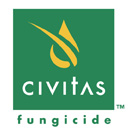
Chemical pesticide application has been the dominant form of disease control on heavily managed turf for decades. Societal pressures in many locations over the past several years have led to the search for alternative methods of disease control. One of these alternatives is activated disease resistance, which involves using a plant’s own defense arsenal to combat disease.
Join Brady Nash to learn how traditional chemical and activated resistance-type fungicides work. We’ll then discuss how turfgrass plants respond physiologically to applications of activated resistance products. Impacts regarding input reductions, latest research and field observations will be covered, as well as information on ways the end user can get started using these products. Appropriate timing and how to integrate these products into their existing IPM program will also be discussed.
About the Instructor
Brady Nash is a product specialist within R&D at Petro-Canada Lubricants Inc., a Suncor Energy business. Nash obtained both his M.Sc. and B.Sc. degrees at the University of Guelph, just outside Toronto, Ontario. His research focused on molecular aspects of plant disease resistance, particularly inducing resistance (SAR/ISR) in creeping bentgrass to various diseases; both in the lab and in the field. He is originally from Calgary, Alberta however he has spent much of his life in and around the Toronto area.